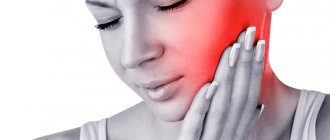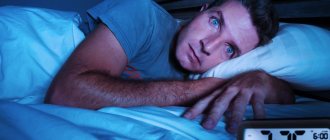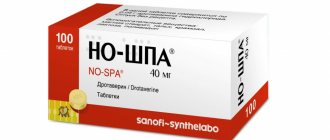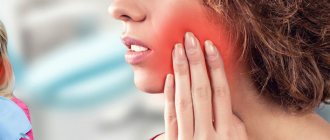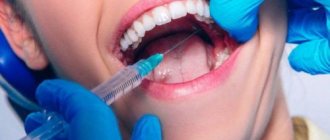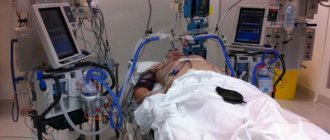Ear pain is a fairly common symptom. Painful sensations in this case give the patient a lot of unpleasant moments, and it is very difficult to simply “endure” such pain. It is noteworthy that pain in the ear is not always associated with diseases of the hearing organ. Such painful sensations can also be caused by other organs that radiate, that is, “giving off,” to the ear. A condition in which the ear hurts, but there is no inflammation in it, is called otalgia.
Otalgia can be caused by many reasons:
Temporal arteritis
The disease is an inflammation of the vessels of the temporal artery.
If the inflammatory process spreads to the ear artery, the patient will also experience pain in the ears. This disease is typical for older women. It causes blurred vision, headaches, pain in the temples, and increased fatigue. Make an appointment right now! Call us by phone or use the feedback form
Sign up
Along the branches of the vagus nerve, pain can radiate to the ear from the esophagus, thyroid gland, and organs of the cardiovascular system.
If you have ear pain, you should definitely consult with an otolaryngologist, since this condition may signal the presence of serious diseases in the body. If the ear is healthy, no abnormalities have been identified, and the pain does not go away, it is necessary to diagnose the nose, larynx, pharynx and, if necessary, other organs to identify the cause of otalgia. Further treatment will depend on the diagnosis.
Types of ear pain
Pain in the ears can manifest itself in different ways. The specificity of pain acts as one of the guidelines in determining pathology.
Nature and intensity of ear pain:
- Sudden pain. Accompanied by acute pain, it can be caused by injury or a foreign object;
- Progressive pain. It occurs against the background of pathologies with moderate dynamics of development. May indicate wax plug, inflammation in the ear canal;
- Severe pain in the ear, accompanied by throbbing. Character for boil, OVSU, injury;
- Stitching, sharp. The pain occurs periodically, bringing with it discomfort. The main reason is neuralgia;
- Blunt pain. Manifests against the background of diffuse otitis, may indicate the presence of sulfur plugs, inflammation of the middle section in a chronic form;
- Itchy pain. Relevant for those cases when we are talking about damage to the external part. May be caused by otitis media, disruption of the integrity of the ear canal, eczema;
- Intermittent. This kind of sensation is characteristic of radiating pain;
- When swallowing. Causes: OVSU, malignant tumors of the oral cavity and larynx, pharyngitis, tonsillitis.
Diagnostic methods
At the Clinical Brain Institute, a complete diagnosis is carried out, which examines all possible causes of pain in the right ear and right side of the head. The initial appointment is carried out by a therapist. Based on anamnesis (medical history), examination and questioning, the patient receives a referral to a specialist. To exclude diseases of the hearing organ or paranasal sinuses, consultation with an otolaryngologist is necessary, or if a neurological picture is present, a neurologist. If you have high blood pressure, it is recommended that you undergo regular scheduled examinations with a physician.
To obtain a complete picture of the disease, an individual diagnostic regimen is prescribed. It may include the following steps:
- general and biochemical blood tests - will show the concentration of leukocytes (an indicator of the inflammatory process), deficiency of important microelements, as well as glucose levels;
- additional tests - studies to determine the gas composition of arterial blood (to detect hypoxia) and hormones;
- MRI and CT are the most accurate and informative ways to assess the condition of the brain; they are prescribed for suspected neoplasms, various defects of nervous tissue, and pathological changes in blood vessels;
- electroencephalography - a method for assessing the bioelectrical activity of brain tissue;
- Ultrasound of the vessels of the neck and head (Dopplerography) - indicates areas of narrowing of the arteries, impaired blood flow and other pathologies;
- examination by an otolaryngologist to identify diseases of the hearing organ.
Based on the diagnostic results, an individual treatment regimen can be prescribed. It is important to go through all the stages and carry out the necessary tests. At the Clinical Brain Institute, examinations are carried out using modern equipment, which allows you to obtain the most accurate results.
Types of otitis
Depending on the direction of the pain, it is customary to distinguish 3 types of otitis: external, middle and internal otitis.
Otitis externa most often appears as a result of mechanical damage to the auricle or external auditory canal. The following symptoms are characteristic of external otitis of the ear: aching, dull pain, swelling of the ear, and a slight increase in temperature.
Otitis of the middle ear is an inflammatory disease of the air cavities of the middle ear: the tympanic cavity, the auditory tube and the mastoid process.
Internal otitis is untreated otitis media of the middle ear. With internal otitis, inflammation of the inner ear occurs and the entire vestibular apparatus is damaged.
Possible complications
If an unpleasant symptom occurs, you should immediately contact your dentist. You should not postpone your visit, since the problem itself will not disappear, but may only get worse. Only a specialist can tell you what to do. In order to make an accurate diagnosis, a computed tomography scan is prescribed. If the doctor excludes the presence of dental problems, the patient will be referred to another specialist (neurologist, oncologist, phlebologist, etc.). Lack of help for muscle tension can lead to the following problems:
- the appearance of back pain;
- dizziness;
- sleep disorders;
- blurred vision, pain in the eyes;
- increased sensitivity to light;
- depressive state.
If the discomfort is accompanied by congestion in the ear, there is a risk of partially or completely losing hearing. When the jaw does not open completely, it shifts. It becomes painful to chew. After some time, problems with teeth arise, enamel wears off, and sensitivity increases.
Treatment of otitis media
If you have otitis media, treatment can only be prescribed by an otolaryngologist. Treatment of otitis media depends on the stage of the disease and the patient’s condition.
In acute eustachitis, treatment of otitis media is aimed at restoring the functions of the auditory tube. Sanitation of the paranasal sinuses, nose and nasopharynx is carried out in order to eliminate infection - rhinitis, sinuitis, etc.).
Vasoconstrictor nasal drops (otrivin, nazivin, etc.) are prescribed; in case of excessive mucous discharge from the nose, drugs with an astringent effect (collargol, protargol) are prescribed. Catheterization of the auditory tube is carried out using aqueous solutions of corticosteroids, and pneumomassage of the eardrums.
In the stage of acute catarrhal otitis media, catheterization of the auditory tube is carried out with the introduction of aqueous solutions of corticosteroids and antibiotics (penicillins, cephalosporins) into the cavity of the middle ear. Local anesthesia is prescribed (otipax drops, Anauran, Otinum). An intra-ear endaural microcompress according to Tsytovich is carried out: a cotton or gauze turunda soaked in a drug with an analgesic and dehydrating effect is inserted into the external auditory canal. Painkillers with an antipyretic effect (nurofen, solpadeine, etc.) are also prescribed. If there is no effect from symptomatic therapy, antibiotic therapy is prescribed within 48-72 hours.
Purulent otitis in the pre-perforated acute stage requires the same set of procedures as in the second stage, but supplemented with the following measures:
- prescription of penicillin antibiotics (amoxicillin, etc.), cephalosporins or macrolides;
- paracentesis (incision of the eardrum) when the eardrum appears to bulge.
It is important to prevent complications of the disease at this stage. After spontaneous opening of the eardrum or paracentesis, the disease progresses to the next stage.
The post-perforation stage of acute purulent otitis media involves the following treatment regimen:
- started antibacterial therapy continues;
- catheterization of the auditory tube is performed with the introduction of corticosteroids and antibiotics;
- a thorough toilet of the external auditory canal is carried out daily - cleaning it from purulent contents;
- transtympanic infusion of drops with an antibacterial and anti-edematous effect is prescribed (alcohol-based drops (otipax, 3% boric acid solution) are not used in this case).
In the scarring stage of AOM, spontaneous restoration of the integrity of the membrane occurs, and all functions of the ear are completely restored. However, this period requires mandatory observation by an otolaryngologist: there is a danger of chronic inflammation in the middle ear, its transition to a purulent form, or the development of an adhesive scar process in the tympanic cavity. It is also possible to develop mastoiditis.
1 Audiometry in MedicCity
2 Audiometry in MedicCity
3 Audiometry in MedicCity
In case of acute otitis media, timely contact with an otorhinolaryngologist is very important. The only measure to prevent complications is correct and timely diagnostic and treatment measures for otitis media. Sometimes the consequences of acute otitis media are adhesions in the tympanic cavity (adhesive otitis media), dry perforation in the eardrum (dry perforated otitis media), purulent perforation (chronic suppurative otitis media), etc. In addition, AOM can lead to such complications as such as mastoiditis, labyrinthitis, petrositis, meningitis, sepsis, venous sinus thrombosis, brain abscess and other life-threatening diseases of the patient.
What is “possible” and what is absolutely “not” for ear pain
If a child has ear pain, it is recommended to visit a doctor as an emergency. If you need an ENT doctor, you can make an appointment with him in our clinic.
How to reduce pain?
Folk remedies:
- Ammonia with camphor. The solutions are mixed. Gauze is dipped in the solution and placed in the ear for a few minutes, this allows you to get rid of pain;
- Decoction based on onions. Another way to get rid of pain. A warm decoction is used to wipe the auricle and ear canal. The result is a disinfecting effect and pain reduction.
An alternative option is to take a pain reliever. In some cases, the use of vasoconstrictor drops is allowed.
What not to do?
- Warm up the ear. This action may spread the infection;
- Taking antibiotics. This approach is ineffective and can cause damage to nerve endings;
- Use of medications “as advised.” The use of drops is prescribed only by a doctor based on examination and test data. Only a doctor will help resolve the issue of prescribing the optimal course of treatment for a child and an adult, taking into account the specifics of the clinical picture.
- “Folk” methods of a radical nature.
Our Heratsi Medical Center employs only experienced doctors with high professional training. We have high-precision equipment: an expert-class ultrasound machine, our own laboratory for working with analyses.
The cost of all services of the medical center can be viewed in the “Price” section or by calling the 24-hour hotline.
Pain mistaken for toothache
Diseases and conditions in which pain can be mistaken for dental pain . These are mainly diseases of related areas (paranasal sinuses, organs of vision and hearing, pharynx, cervical vertebrae, brain); The cause may also be diseases of the heart and blood vessels, the musculoskeletal system (spine), the nervous system, as well as mental disorders.
Trigeminal neuralgia. The trigeminal nerve is responsible for sensation in the face and mouth. When it is affected, the pain is very severe and similar to a toothache. Unfortunately, many patients with neuralgia have undergone numerous depulpations and tooth extractions, but continue to experience pain. Despite the patient’s confidence that the cause of the pain is the tooth, the dentist needs to correct the diagnosis and refer the patient to a neurologist. Another option is postherpetic neuralgia, which occurs in people who have had herpes zoster (shingles). Therefore, it is important to inform your dentist if itchy blisters have appeared on the skin and mucous membranes for some time, or this diagnosis has been made.
Cluster headache is a syndrome of unknown origin, characterized by acute, paroxysmal pain. Perhaps this is a form of migraine. Cluster headaches are more common in men aged 30-60 years. Many patients report pain after drinking alcohol.
In classic cases, there is unilateral pain in the upper jaw, maxillary sinus and behind the orbit. Cluster headache is often mistaken for acute pulpitis or periodontitis of the chewing teeth of the upper jaw.
Inflammation of the middle ear (otitis media) is a common disease, especially in children, caused by streptococci. It is well known that with diseases of the chewing teeth, pain can radiate to the ear area. Conversely, with inflammation of the middle ear, the symptoms shift to the back of the upper and lower jaws. After diagnosis, the patient is referred to an otolaryngologist.
Acute maxillary sinusitis (sinusitis). The roots of the teeth of the upper jaw are adjacent to the bottom of the sinus, so inflammation often imitates toothache. Most forms of sinusitis are allergic and are characterized by dull pain in the zygomatic region and alveolar process of the upper jaw.
In acute sinusitis, the pain can be stabbing, pressing, pulsating. Often it radiates to the infraorbital region, to the area of the upper jaw teeth. In this case, the pain is felt not in any one tooth, but in several. It is recommended to contact an ENT specialist.
Diseases of the paranasal sinuses are often chronic and allergic. They tend to be seasonal, because for most people allergens are seeds and pollen of various plants. In countries with a northern climate, the incidence of sinusitis increases in spring and autumn. The patient should be referred to an ENT specialist and an allergist.
Heart diseases. Angina is pain behind the sternum, which can radiate to the left shoulder and along the arm. The pain usually occurs after physical activity. These symptoms are extremely important, since angina pectoris is a harbinger of acute myocardial infarction. Sometimes the pain is felt only in the left shoulder and arm, and even less often in the left corner of the lower jaw.
So, if there are complaints of pain in the posterior part of the lower jaw on the left and there are no objective reasons from the teeth, we can assume the cardiac nature of the pain. In this case, the dentist will refer the patient for a consultation with a cardiologist or therapist.
Salivary stone disease develops in the duct of one of the salivary glands. For a long time, the only symptom was dry mouth. When the stone reaches a critical size, it clogs the salivary duct; toothache appears. Swelling may occur in the submandibular area. To make a diagnosis, several x-rays are taken. The treatment is carried out by a dental surgeon, it consists of making an incision in the duct and removing the stone under local anesthesia.
Pain of musculoskeletal origin can be caused by injury or dysfunction of the muscles of the neck, head, and jaws. Pain can be noted in the area of the teeth, cheek, temple, side of the neck, and back of the head. This group also includes diseases of the temporomandibular joint and the cervical spine. Other joint diseases (rheumatoid arthritis, gout, psoriasis; collagen diseases, or collagenoses) can cause pain in the maxillofacial area.
With internal dysfunction of the temporomandibular joint, complaints of toothache often arise. Joint dysfunction is caused by displacement of the articular disc, the formation of adhesions or due to various forms of arthritis, injuries, yawning, and prolonged opening of the mouth. Manifestations: the mouth does not open completely, when opening the lower jaw moves to the side, clicking or creaking in the joint, as well as pain in front of the tragus of the ear.
The pain is long-lasting, dull, muffled, but can become more acute when opening the mouth wide or chewing. In some cases, the pain radiates to the temple, cheek, and distal parts of the upper and lower jaws. In such cases, the patient may believe that he is experiencing toothache.
Tumors. Pain is rarely a symptom of malignant tumors in the jaw area. In typical cases, there are complaints of tingling or decreased sensitivity (numbness). Most tumors affect not only sensory but also motor nerves.
Atypical pain conditions masquerading as toothache are a group of syndromes that do not correspond to any specific disease. In this case, the patient is usually convinced that the cause of the pain is the teeth” and insists on their treatment or removal. Although the cause is unknown, many experts suggest the nervous system is involved. Atypical pain is usually chronic, aching; patients feel it deep inside the bone and have difficulty localizing it. Sometimes the pain seems to move from one area to another, and there may be complaints of pain throughout the body. The examination should include psychological screening and behavioral tests that assess depressive, anxious, and hostile behavior. It is possible that the primary cause of atypical pain is a psychological disorder. Consultation with a psychologist or psychiatrist is indicated.
Our doctors
Debryansky Vladimir Alekseevich
Doctor - otorhinolaryngologist, doctor of the highest category
34 years of experience
Make an appointment
Zharova Galina Gennadievna
Doctor - otorhinolaryngologist, member of the European Society of Rhinologists, doctor of the highest category
40 years of experience
Make an appointment
Gogolev Vasily Gennadievich
Doctor - otorhinolaryngologist
20 years of experience
Make an appointment
Prevention
Preventive procedures involve eliminating factors that cause pathology:
- Identify and eliminate pathologies of the ENT organs in a timely manner, without leading to relapses.
- Do not use ototoxic drugs.
- Patients who constantly interact with complex production factors should undergo audiometry 2 times a year.
- We need a healthy lifestyle.
- Multivitamins should be taken in spring and autumn.
- Ears need to be covered with something in production where it is noisy.
- Use a hat in winter.
